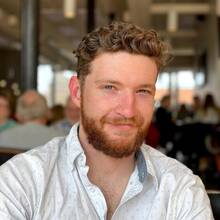Is half of America weird? Presidential politics might make you think so. Minnesota Governor Tim Walz called Donald J. Trump and other Republicans “just plain weird” in an interview in late July, and the description became so popular that it may have been a factor in Democratic presidential nominee Kamala Harris choosing him as a running mate a couple of weeks later.
Mr. Walz later said that he was not talking about all “Republicans” but about Republican politicians. Fair enough. I would say that almost all politicians are pretty weird. The trouble is that many Democrats from coastal states seem to think the word also applies to millions of their fellow countrymen who live in smaller and less fashionable places, and that these other Americans are not just weird, but vicious and even dangerous. The “weird” meme is reminiscent of Hillary Clinton describing “half” of Mr. Trump’s supporters as a “basket of deplorables” in 2016 and thereby denigrating a wide swath of the country.
[Related: Our weird, low-IQ, creepy and dumb presidential election]
Last year, the best seller White Rural Rage: The Threat to American Democracy caught the attention of many trying to explain the enduring support for Mr. Trump. The contention of its authors, Tom Schaller and Paul Waldman, is that rural Americans as a group are not only what many Democrats are now calling weird, but that they are, as suggested by their subtitle, a “threat to democracy.” (Their definition of rural is loose, and it seems to apply to those who live in smaller cities, too.) This group of Americans is often caricatured as racist, xenophobic, authoritarian, easily led by right-wing media and likely to support political violence. A liberal reader might find themselves nodding along and saying, “Yes, that’s what they are!” But Tyler Austin Harper, a professor at Bates College, makes the case in an article for The Atlantic that White Rural Rage is itself dishonest and based on dubious research.
There is resentment in our countryside and smaller cities, but it is often anger at being punched down on by the people who live in the biggest cities and suburbs and hold the most power in our society. The targets of White Rural Rage are among the least powerful, most economically disadvantaged people in America.
Overall, rural places are the poorest kind of community in the United States. In 2019, 11.9 percent of families living in urban areas were below the poverty line, but in rural areas the figure was 15.4 percent. Despite the fact that rural Americans produce so much of our country’s food, nine of the 10 counties in the United States with the highest food insecurity rates are rural. Rural Americans are also more adversely affected by ill health, with an average lifespan 2.5 years shorter than the average for urban Americans. They are more likely to suffer from heart disease and stroke, but, at the same time, they are the least likely to have access to health care. Rural hospitals are closing at an alarming rate, which means that sufferers of stroke or heart attack are more likely to lose their lives or their function in those crucial minutes between the event and treatment.
It’s not just the hospitals that are closing. Factories are closing, farms are closing, stores are closing and young people are moving away. As resources, jobs, health care, and community drain out, is it any wonder that rural America suffers more from depression? Is it any wonder that it has the highest rates of suicide?
Though part of a disadvantaged population, rural citizens receive frequent mocking from the entertainment industry (think of a Jimmy Kimmel monologue or the “Daily Show”), political pundits, authors and even scholars. They might not always say “rural Americans,” but people in the heartland know who they’re talking about.
[From 2017: “Please stop watching John Oliver”]
This ridicule of our fellow Americans isn’t healthy for anyone. It merely amplifies the already existing distrust between different corners of America. Too many Americans on both sides of the political divide have walled themselves off in their separate worlds, convinced that the other guys are an existential threat. Dialogue becomes impossible for all, and defensive verbal combat the only alternative.
To have peace in this country, to work at all toward the common good, requires that we see one another as part of a common project, as belonging to the same national community and as equally worthy of respect. During the Civil War, the calamity that constituted America’s greatest internal division, Abraham Lincoln still thought it worthwhile to give an impassioned reminder that “we are not enemies, but friends. We must not be enemies.” Even while battlefields lay strewn with the dead, it was this extraordinary faith, this forgiveness, this magnanimity, that allowed the nation to emerge, to heal, and to be better than before.
The philosopher René Girard argued that human communities are always prone to blame the “odd ones out” for all our problems, and to load all of our worries, sins and troubles upon them. This is a universal temptation among both urban and rural citizens, and we must all be on guard against it.
Our work is to love even in the midst of difficulty and disagreement—to see, as the poet Robert Service said, “beneath the nice veneer, the naked soul.” If our country is to come whole out of this time of discontent, it will be by remembering and living Lincoln’s words: “Though passion may have strained, it must not break our bonds of affection. The mystic chords of memory will swell when again touched, as surely they will be, by the better angels of our nature.”








